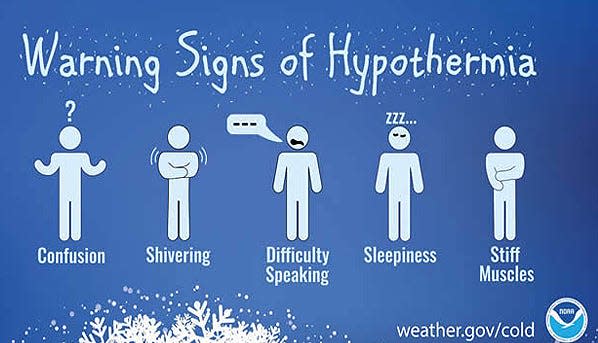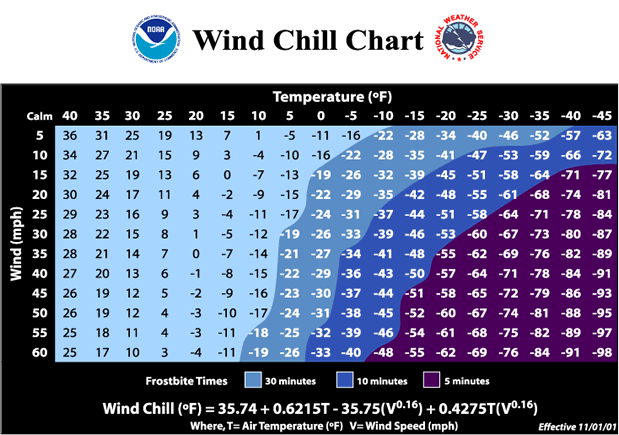What is frostbite? 5 things to know about the cold weather injury and how to prevent it
It’s cold outside, which can create big problems if you don't take proper precautions. I should know.
Many years ago, when I was a kid in Pittsburgh, we had a modest snowfall. No big deal and a neighbor went out to shovel his front walk. However, he was in a hurry and went out in bedroom slippers. (Now, before drawing conclusions about his intelligence, I can attest that he was a smart man, a high school English teacher, in fact. Regardless, it underscores how we all can make silly decisions on the spur of the moment because we don't take time to stop and think.)
Unfortunately, this decision cost him dearly as he experienced severe frostbite on his feet, ultimately resulting in gangrene and requiring a series of amputations. Not all frostbite is this serious, but it shouldn't be disregarded.
What is frostbite?

Frostbite is an injury caused by freezing of the skin and underlying tissues. There are several degrees of frostbite. First-degree, often called frostnip, occurs when only the surface of the skin is involved and it freezes. There may be itching and pain, and the skin is numb and may develop white, red or yellow patches. Usually, there is no permanent damage, other than the skin may be less sensitive to cold and heat afterward.
When freezing worsens and occurs in deeper tissue, the situation becomes more serious as occurred with my neighbor in Pittsburgh.
You may like:Stage 4 cancer canceled their wedding. How love — and a little help — kept them smiling
What should I do if I think I have frostbite?
If you suspect frostbite, regardless of how severe, quick action is needed. Protect the frostbitten skin, get out of the cold, don't move the affected area (if possible, don’t walk on frostbitten feet or toes), and don’t massage it. Gradually warm the skin in warm water or wrap it with a blanket. Never apply direct heat (heat lamp, blow dryer, heating pad, etc.), and seek medical help as soon as possible.
How does temperature impact frostbite?
Unfortunately, when confronting cold conditions, interpreting what is really going on can be tricky. This is because you have to consider not only the air temperature but also wind velocity and whether you are wet or dry.
On cold days, the weather forecast will report the temperature and how that temperature will feel to you. So, if it’s 30 degrees Fahrenheit but the wind is blowing fiercely, it could feel like 10 degrees Fahrenheit or colder. This is due to the wind chill factor which calculates the degree of heat loss from the skin based on the combination of air temperature and the velocity of the wind.
You may like:Is soy bad for you? Should men eat it? 3 things to know about adding soy to your diet
Heat is lost from the body to the surrounding air when the skin temperature (usually about 93 degrees Fahrenheit) is greater than the air temperature. This is called convective heat loss. Sitting indoors where the air temperature is likely to be about 72 degrees Fahrenheit, heat moves easily from the skin to the air. This is because heat always moves from higher to lower temperatures. In colder temperatures, heat leaves the skin more rapidly. Conversely, if the temperature rises, you lose heat more slowly. Thus, air temperature is an important factor in heat exchange.
How does wind impact frostbite?

Another factor is the velocity of air circulating over the skin. On a calm (no wind) cold day of 20 degrees Fahrenheit, the air surrounding the body accepts heat, then rises away from the body to be replaced by new cold air which becomes heated and rises, and so on. However, when it’s 20 degrees Fahrenheit and there is wind, the amount of air passing over the body increases greatly and heat is removed much more rapidly. The wind chill factor is greater, in other words, and it "feels" much colder even though it’s the same 20 degrees Fahrenheit.
How does being wet impact frostbite?

Cold temperatures and wind make a dangerous combination, but things are much worse when the skin is wet. This is because wet skin loses heat 25 times faster than dry skin. An old movie brings this point home. Two Canadian Royal Mounted Police were dispatched to bring in a fugitive who lived in the wilds of the far north and knew how to survive. As they made their way home, they crossed a lake and one of the officers fell through the ice. His partner rushed to help, but the fugitive tried to stop him, telling him: "Don't… he will die very soon." In other words, he knew that because the officer was wet from head to toe, his body would lose heat so fast there was nothing they could do to save him.
You may like:Can regular exercise help reduce your risk of cancer? Here's 4 things to know
But the officer ignored the fugitive, reached in, and pulled his colleague out of the water. The friend soon died, leaving the officer with wet arms, and the fugitive warned that he might lose his arms to severe frostbite. Luckily a moose was nearby, and the fugitive convinced the office to shoot it, open it up and place his arms inside to warm them. Reluctantly, the officer took this advice and saved his arms.
My advice when confronting cold weather is to err on the side of caution because the impact of cold weather can easily be underestimated. Be wise, always consider the wind chill factor, and dress accordingly. Dressing in layers is best because it allows you to add or subtract clothing as needed when weather conditions change, or you become more physically active and produce more body heat.
And, of course, stay dry at all costs. But if you get wet, consider it an emergency situation in need of immediate attention.
Reach Bryant Stamford, a professor of kinesiology and integrative physiology at Hanover College, at stamford@hanover.edu.
This article originally appeared on Louisville Courier Journal: Things to know frostbite and how to prevent it

